Most folks these days carry some kind of device with them that has at least a subset of their music collection on it. Some have services like Spotify, Pandora, or some other service that will deliver music to a smartphone. When we get in our cars, however, there’s usually no built-in connection for getting the phone and car radio connected. Enter the iTrip Auto from Griffin Technology. This little cable charges an iOS device via your vehicle’s power port and broadcasts the audio content of your device to the FM band, allowing you to tune into the “station” it creates and hear your music over your car stereo. Griffin Technology, of course, is no stranger to true Gadgeteers. They’ve been making power cables and cases for handhelds for years. And a gadget that connects your phone gadget to your car (which, for many, is just a big transportation gadget) while charging your phone – it’s like a Gadget Trifecta! So, how does it work in real life?
Images can be clicked for a larger version.
Getting audio into your car stereo can be done in two basic ways – through a wireless connection (Bluetooth or FM), or through physical cables (tape player converters, AUX jacks or dedicated wires). In my experience, the least painless and best sounding method has always been a physical connection. Even with a tape player converter, the sound is pretty decent and never suffers the static or low bandwidth issues sometimes seen with wireless.
I’ve been using a Bluetooth system for a few years now, and really like the ease of turning it on and having it access my music while my phone stays safely in my pocket, but when I drive my Lovely Bride’s car, I lust after the AUX connection and it’s full-spectrum audio that she enjoys daily. That little Bluetooth device on my sun visor just can’t compare. So when the Griffin iTrip was offered, I jumped at the chance to test it out.
Overall, once you extract the device from its sealed plastic tray, it amounts to a longish cable with a power plug on one end and an Apple 30-pin connector on the other, with a squarish box inline about a third of the way down the cable from the 30-pin side. Total length is just over a yard (41”), so it should be able to reach power outlets in most vehicles easily. On the plug, there is a Griffin logo inside a round LED that indicates when the unit has power. The 30-pin connector has a similar logo indicating the top (screen side) orientation of that plug, too.
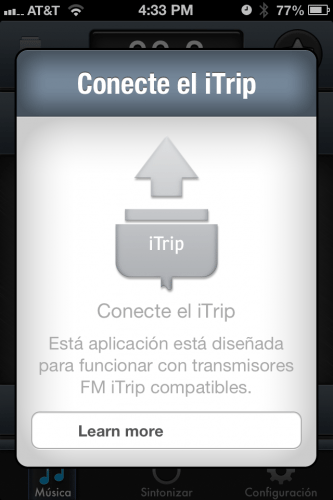
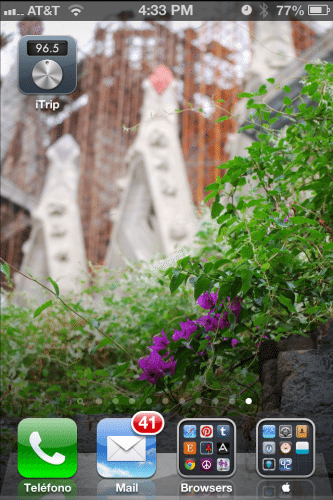
Setup is almost nothing: plug it in to power and to your iPhone, download the app, tune to the station shown on the transmitter, and play your music. Whenever your iPhone is connected to the cable and it’s in a powered 12v port, your phone will be charging. I set it up in the driveway, so that I could download the app via my home WiFi.
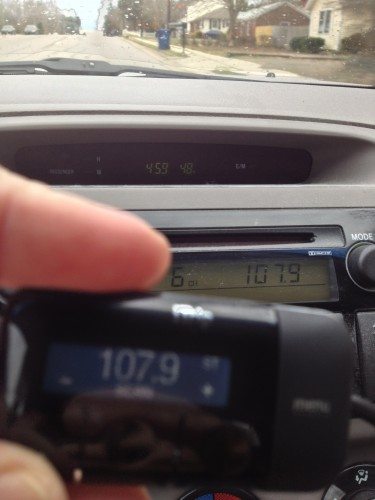
Once you open the app, it guides you through a quick setup and explains the process. The gist is that you can scan the FM band for any unused frequencies using the inline tuner display, and the iTrip transmitter will lock into it and begin broadcasting there. Tune your car’s audio to that frequency, hit play, and you’re hearing your music (or whatever) through the radio. It’s a lot easier to set up and use than it sounds, and it’s beautiful – until you start to drive.
In most metro areas, the FM airwaves are quite crowded. Between small indie stations, college stations, multi-cultural broadcasts and repeaters, any drive of more than a mile or two will find the “unused” bands being crowded out by other stations at or near the same frequency. This causes interference, static, and a general unpleasant listening experience.
Exacerbating the issue is modern car design and the Faraday cage. Used to be, back in the early days of FM convertors, there were few stations, and the antennas for the AM radio on cars were fused into the windshield. I spent one Christmas day upside down under the dash of my dad’s car installing a FM player to his AM-only company car, so that he could tune to a single station and enjoy FM music through the convertor. With the antenna right in the glass a few inches away from the convertor, reception was fantastic. My older daughter’s old Jeep Cherokee had a similar antenna setup, and she loved the quality of music played back from her iTrip and iPod. But she, like me, now has a car with the antenna mounted completely outside the passenger cage, and the steel of the car’s body forming a sort of Faraday cage around the space where the transmitter resides. The result is less that stellar reception, and static from crowding stations in metro areas.
On long car trips, where you leave the jumble of metro stations, the experience is much less painful, but there are still occasional hisses and pops when traveling near anything that broadcasts radiation: fluorescent lights at the gas station, radio towers, even large power transformers can make your music fade or sputter for a second. With podcasts or audiobooks, it may not be an issue, but with music, it’s really irritating. And, even though you’re hearing your music through your car stereo, it’s still not as full-spectrum as a hard-wired connection.
So, what’s the verdict? Well, it depends. If you want a quick, portable way to hear your iPhone’s content in any vehicle with a 12 volt plug and an FM radio, this is quite nice, especially on longish trips between large population centers. If your vehicle’s radio cannot be retrofitted with an AUX jack, or it’s just too costly to do so, it’s also a good method, but remember, sound quality will be less than 100%. If you have a newer vehicle with an AUX port or an older vehicle with a cassette player, either of these will still yield better sound with less hassle and interference than the iTrip.
Three stars. Well done; hardware does what it says, but interference can be an issue.
Gerber Gear EVO Jr. Folding Knife - Serrated Edge [22-41493]
$28.99 (as of November 16, 2025 17:59 GMT -05:00 - More infoProduct prices and availability are accurate as of the date/time indicated and are subject to change. Any price and availability information displayed on [relevant Amazon Site(s), as applicable] at the time of purchase will apply to the purchase of this product.)Gerber Gear 22-47162N Fast Draw Folding Assisted Opening Pocket Knife, Fine Edge, Black
6% OffProduct Information
| Price: | $60 |
| Manufacturer: | Griffin Technology |
| Retailer: | various online and in stores |
| Requirements: |
|
| Pros: |
|
| Cons: |
|

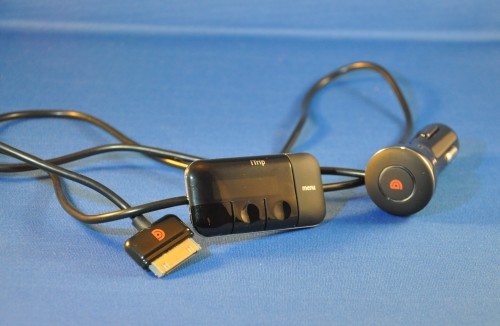
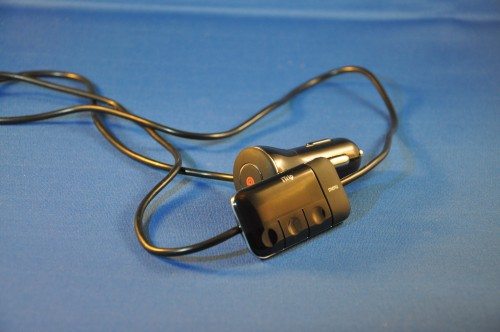
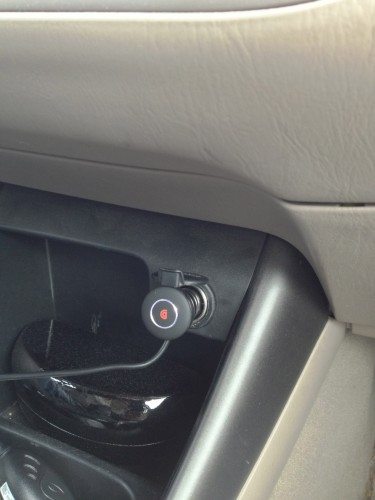



Gadgeteer Comment Policy - Please read before commenting
I use the Griffin AutoPilot, a Proclip mount and a Cassette adapter for my car and iPhone. I am able to drop my phone into the mount and have all of my audio directed to the stereo.
I rarely listen to over the air radio stations, I unscrewed the antenna. It’s helped my reception.
I bought and had installed (total price maybe $200) from Best Buy that attaches directly to the antenna connectors on my radio. I then plus my MP3 player into a permanent jack on the car. The signal goes directly into the radio instead of over the air and the signal is strong so I get good sound even in crowded bandwidth cities.
A Griffin device has been around for a long time (unless I do not understand how it works) and it probably does not work any better now then it did 20 years ago. I should note that one real problem with over-the-air devices such as the Griffin is as you go from place to place, you constantly have to reset it to a blank spot on the dial.
I bought a cheap ( 50 EURO ) car radio with SD/MMC/CD/CD-rom/FM/USB on board plus Bluetooth.
I play my music from my iPhone on my radioset using a BT-connection.